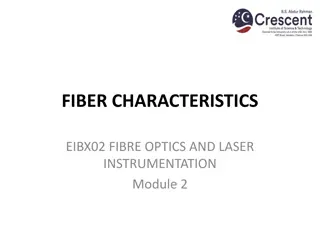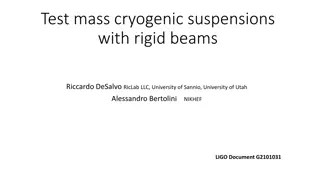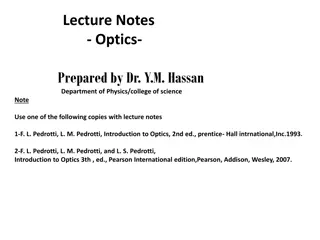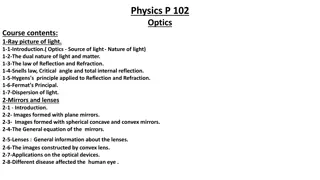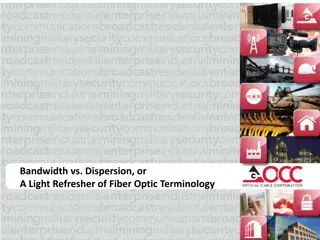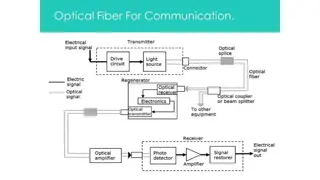Understanding and Quantifying Bessel Beams in Fiber Optics
To analyze Bessel beams in fiber optics, a fitting algorithm must be coded to quantify the beam. The process involves defining combinations of Bessel functions, finding the best fit through iterations, and addressing the substantial computational challenge posed by the large number of calculations. Possible solutions involve looping through functions separately to handle the vast computation more efficiently.
Download Presentation

Please find below an Image/Link to download the presentation.
The content on the website is provided AS IS for your information and personal use only. It may not be sold, licensed, or shared on other websites without obtaining consent from the author. Download presentation by click this link. If you encounter any issues during the download, it is possible that the publisher has removed the file from their server.
E N D
Presentation Transcript
Quantifying the Bessel Beam Josh Nelson
Motivation Ultimately we want to understand the Bessel beam we send into fiber optics. Thus, we must quantify our Bessel beam using a fitting algorithm There is no already made one so it must coded
Before the code Slicing Normalizing
Code Basics We want a model of the form: c0*J0(A0*x) + c1*J1(A1*x) + + c9*J9(A9*x) + F 21 total constants: c0 c9, A0 A9, F Restrictions: constants less than or equal to one. So we must find the correct 21 constants! How?
The Loop Steps: Define all different combinations of Bessel Functions at 0.1 step sizes for coefficients Take first combination and find intensity for all residual x-points in data Find the difference between each residual intensity and square value
The Loop Steps (cont): Add all differences up and that gives total difference (or error) for Bessel function with those coefficients Repeat for all combinations of Bessel Functions Bessel function with the smallest difference is the best fit of the data
Problem The number of calculations done is the number of steps for each coefficient to the power of the number of coefficients. number of steps for each coefficient = 10 number of coefficients = 21 Number of calculations = 10^21
Problem How long does that take to calculate? 10^5 calculations = 20 minutes So: (10^5)/(10^21) = (20 min)/time So time = 20*10^16 minutes Or time = 380,517,503,805.2 years What does this mean?
Solution maybe Loop functions seperately: 1. c0, A, F 2. c1, B, F 3. c2, C, F 4. c3, D, F 5. c4, E, F 6. c5, G, F 7. c6, H, F 8. c7, I, F 9. c8, K, F 10. c9, L, F
Solution maybe Each loop now has 10^3 calculations and takes about 2 seconds. This gives a nice fit in about 20 seconds. We can redo this same process starting with the new coefficients and refine the fit.
Possible Problem Finding Local Minimum instead of Global Minimum
Future Adding code for fitting at finer resolutions Completely restarting if this turns out to just be a local minimum.






